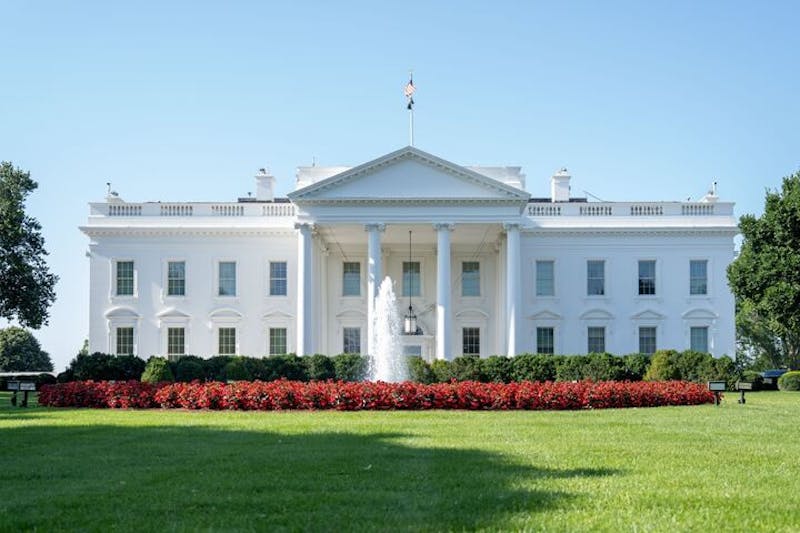Federal and state education officials will examine the discrepancies between on-campus and off-campus crimes. Federal and state education officials and the Pennsylvania Attorney General's office are reviewing how the University compiles its annual reports of on-campus crime in response to recent newspaper articles questioning the accuracy of the University's statistics. Using a definition which includes only incidents that occur on or inside properties owned and controlled by the University, Penn's annual crime report listed 18 on–campus robberies in 1995, 38 in 1994 and 45 in 1993. But internal University Police records show the department received 188 additional reports of robberies in 1995, 170 in 1994 and 176 in 1993 that did not fit the University's definition of on-campus crime. According to this definition, on-campus locations include Locust Walk and the sections of 36th through 39th streets between Walnut and Spruce streets. Spruce and Walnut streets themselves, public sidewalks and any properties the University owns but leases to another party are considered off-campus. Managing Director of Public Safety Thomas Seamon noted that College senior Patrick Leroy's September 25 shooting on the sidewalk outside the Dental School will not be counted in this year's annual report. And any crimes that occur in the Food Court or any of the retail stores on the 3400 block of Walnut Street would also not be considered on-campus for the report, he added. As a result of that disparity, the U.S. Department of Education will conduct a "focused program review" of the University's compliance with the Crime Awareness and Campus Security Act of 1990, according to Jane Glickman, spokesperson for the department. The act requires schools to make annual reports of on-campus crime available to students and prospective students. It defines as on-campus any building or property the University owns or controls that is directly related to its educational mission. The University's General Counsel reviewed the law when it was passed and told Public Safety officials to include only incidents that occur on or inside property "solely owned and controlled by the University" in its annual crime report, Seamon said. "The federal right-to-know legislation can be improved," Seamon said. "Until that's done, we can't make our own rules." As part of its "unscheduled" review, the U.S. Department of Education will request information about the University's reporting procedures, check the accuracy of the statistics in its annual reports and make recommendations on how to improve the reporting, Glickman said. She added that the department decided to conduct its review in response to a November 25 article in The Philadelphia Inquirer detailing how the University compiles its annual crime reports. The Pennsylvania Attorney General's office is also reviewing an anonymous complaint that Penn's annual report under the University Security Information Act of 1988 is inaccurate, according to spokesperson Jack Lewis. The act requires all colleges and universities in Pennsylvania to report annual statistics of on-campus crime to the state police and gives the attorney general the authority to impose a $10,000 fine on institutions that do not comply with the law. Seamon said the University reports the same statistics of on-campus crime to both the state police and federal authorities. The Philadelphia Police Department's 18th district -- which includes the area on-and-around campus -- reports all other crimes that occur in University Police jurisdiction to the state in its annual uniform crime report. Seamon added that the University maintains a publicly available log of all crimes within University Police jurisdiction. The log is the basis for The Daily Pennsylvanian crime report. The Attorney General's office received a complaint about the University's annual crime report last year as well, but decided not to file suit against the University after reviewing Penn's reporting procedures. "We didn't feel it was necessary to bring an action," Lewis said. "We didn't find sufficient violation of the law." David DeVries, head of the Attorney General's review and advice department, recommended that the University conduct an independent audit of its annual reports, he said. The current complaint alleges that specific incidents of on-campus part I crimes -- a category that includes major felonies such as murder, rape, robbery, assault and burglary -- were not included in the annual Uniform Crime Report to state police, Lewis said. "We may decide we have to speak to officials at Penn again," he said. "But there is no suspicion of wrongdoing at this point." Lewis added that the two complaints mark the first time the state has ever been asked to investigate a University's crime reporting. "In many ways, this office is feeling its way along on this," he said. Additionally, Pennsylvania State Police are drafting a letter to the University about its crime reporting and a second letter to all colleges and universities in the state clarifying crime reporting procedures, according to Spokesperson Charles Tocci. "[The letter] is going to encourage Penn to broaden its interpretation of what the campus area is to make it more accurately reflect the intent of the uniform crime report," he said. Tocci added that the report is supposed to inform citizens about crime in their community and administrators about the best way to use their resources to fight crime. And Pennsylvania Education Secretary Eugene Hickock has asked the state's Board of Education to clarify ambiguities in state laws governing crime reporting when it meets in January, spokesperson Sean Duffy said, adding that the intent of the laws is for on-campus to be "very broadly" understood. "One would assume that any facilities on the campus that students frequent would be of interest to the students and their families and be included in crime reports," he said. "That's why the state board has to act."
The Daily Pennsylvanian is an independent, student-run newspaper. Please consider making a donation to support the coverage that shapes the University. Your generosity ensures a future of strong journalism at Penn.
DonatePlease note All comments are eligible for publication in The Daily Pennsylvanian.







